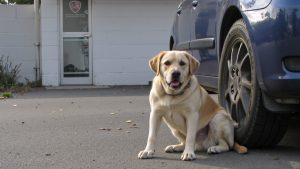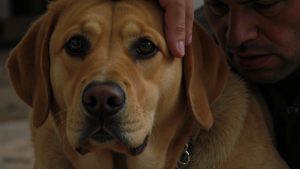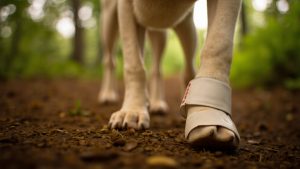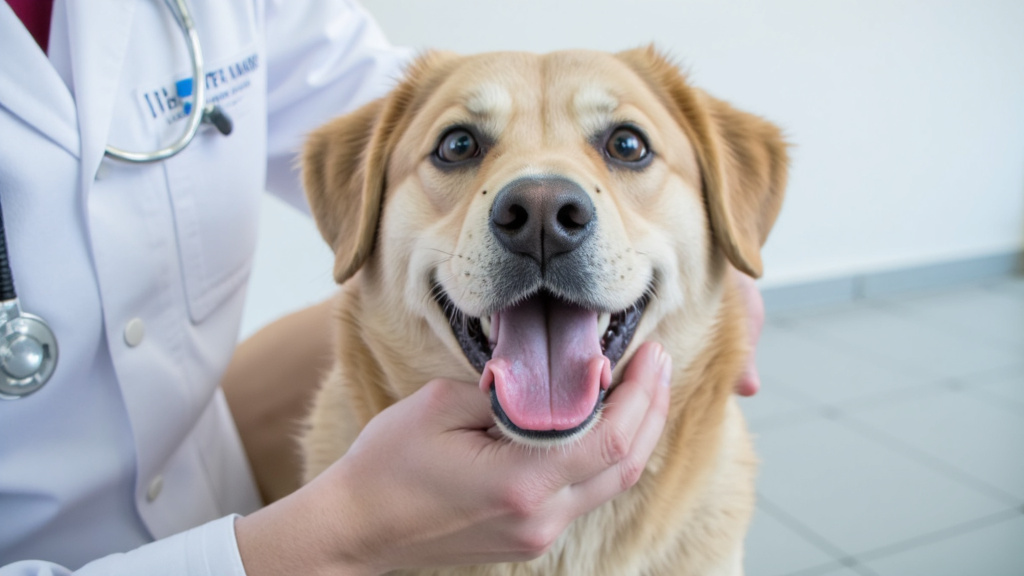
By age three, over 80% of dogs show signs of periodontal disease. While most pet owners monitor their dog’s coat, weight, and energy levels, dental health often goes overlooked.
Dental care is crucial for your dog’s overall wellness, with implications far beyond bad breath. Poor oral hygiene allows bacteria to enter the bloodstream, potentially damaging vital organs like the heart, liver, and kidneys. Simple plaque can quickly develop into a serious, painful condition.
Dogs with dental problems often endure silent chronic pain, leading to behavior changes and reduced appetite. Understanding basic canine oral care helps prevent unnecessary suffering and can extend your dog’s life. Prevention is always better than dealing with complex treatments later.
What Signs Indicate Your Dog Has Dental Problems?
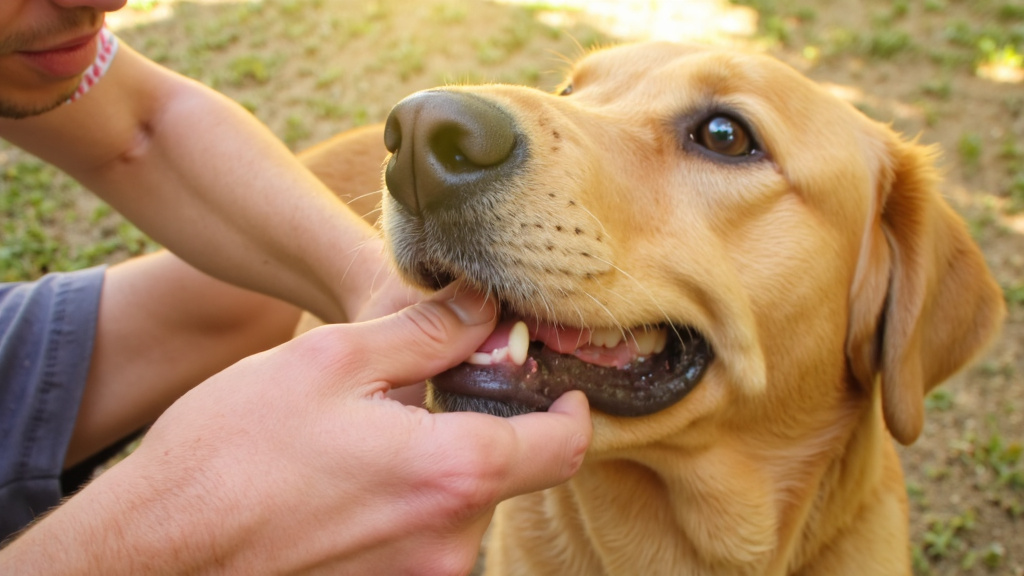
Dental problems in dogs often progress silently until they become serious. Without the ability to communicate pain, dogs depend on their owners to recognize signs of oral discomfort. Early detection can prevent minor issues from becoming major dental concerns.
Breath and Visible Changes
Persistent bad breath (halitosis) is more than just “dog breath” – it’s often a warning sign of bacterial overgrowth from dental disease. Unlike temporary food-related odors, dental halitosis remains constant and intensifies over time.
Healthy canine teeth should be white or slightly off-white. Yellow-brown discoloration or dark spots typically indicate tartar buildup or decay, creating an environment for bacterial growth and gum disease.
Red, swollen, or inflamed gums indicate gingivitis – the earliest stage of periodontal disease. A red line where teeth meet the gums or bleeding during eating signals significant inflammation. Studies show over 80% of dogs above three years old have some form of dental disease.
Behavioral and Physical Changes
Dogs with dental pain often modify their eating habits. They may become selective eaters, chew on one side, prefer soft food over kibble, or avoid previously enjoyed crunchy treats.
Unusual drooling can indicate dental problems. While some breeds naturally drool more, sudden increases in saliva production deserve attention, often occurring when swallowing becomes painful.
Dogs experiencing tooth pain may paw at their mouth or rub their face against furniture. They might become irritable, withdraw from interaction, or resist head touches – all attempts to protect painful areas.
Advanced Warning Signs
Facial swelling, especially around the face or under the eyes, may indicate an abscess requiring immediate veterinary care. Loose or missing teeth suggest advanced periodontal disease affecting tooth-supporting structures.
Teeth displaying unusual colors – particularly pink, purple, or black – indicate damage to internal tooth structures. These changes typically occur when pulp tissue dies following trauma or infection.
| Sign | Description |
| Bad Breath | Persistent halitosis due to bacteria |
| Tartar Buildup | Yellow-brown deposits on teeth |
| Bleeding Gums | Gums that bleed during chewing or brushing |
| Loose or Missing Teeth | Advanced dental issues causing tooth loss |
| Difficulty Eating | Reluctance to eat or chew due to pain |
| Swollen Gums | Red, inflamed gums indicating periodontal disease |
| Pawing at Mouth | Sign of discomfort or pain in the mouth |
| Facial Swelling | Indicates abscess or infection |
| Behavioral Changes | Increased irritability or withdrawal |
Multiple warning signs suggest significant dental discomfort. Most dental problems can be effectively treated when caught early. Combining regular home inspections with professional veterinary dental checks provides the best protection against painful dental conditions.
How Does Periodontal Disease Affect Dogs?
Periodontal disease silently ravages a dog’s mouth, progressing without detection until significant damage occurs. This progressive condition threatens not only your dog’s teeth but their overall health.
Over 80% of dogs show signs of periodontal disease by age three, making it the most common dental condition in canines. Small breeds with shorter noses, like Pugs and Pekinese, face higher risks due to their crowded teeth.
The Progression: From Plaque to Pain
Periodontal disease advances in stages. It begins with plaque—a sticky film containing bacteria that forms on teeth after eating. Without removal through brushing, plaque hardens into tartar (calculus) within 24-48 hours, creating an environment for harmful bacteria to thrive.
As bacteria multiply below the gumline, they produce toxins that trigger inflammation of the gums, known as gingivitis. This first stage presents as red, swollen gums that may bleed during chewing or brushing. Gingivitis is reversible with proper dental care.
Left untreated, gingivitis progresses to periodontitis. The bacterial infection advances deeper, attacking the supportive structures holding teeth in place: the periodontal ligament and jawbone. These structures break down, creating pockets between the teeth and gums that harbor more bacteria.
Beyond the Mouth: Systemic Effects
The impact of periodontal disease extends beyond tooth loss and chronic pain. Bacteria from infected gums can enter the bloodstream, potentially damaging vital organs. Research shows dogs with periodontal disease often develop microscopic changes in their heart, liver, and kidneys.
This bacterial invasion, called bacteremia, occurs even during normal chewing in dogs with gum disease. While healthy dogs can manage occasional bacterial exposure, those with compromised immune systems face serious risks, including potential organ failure.
Signs Your Dog May Be Suffering
Dogs rarely show obvious signs of dental pain until the condition becomes severe. However, certain behavioral changes may signal dental problems:
- Difficulty picking up food or chewing
- Dropping food from the mouth
- Chewing on one side only
- Reluctance to have their head touched
- Bad breath that worsens over time
- Visible tartar buildup along the gum line
- Red, swollen, or bleeding gums
In advanced stages, teeth loosen and fall out. The jawbone can become so weakened that it fractures during normal activities. Chronic pain affects quality of life, and internal organs sustain damage from continuous bacterial exposure.
Prevention: The Best Approach
Periodontal disease is largely preventable with consistent care. A combination of regular home dental care and professional cleanings creates a strong defense against this condition. Even dogs showing signs of periodontal disease can benefit from intervention that prevents further progression.
With regular veterinary dental checkups and a consistent home care routine, you can protect your dog from the pain and serious health complications of advanced periodontal disease.
| Stage | Description | Signs |
|---|---|---|
| Stage 1: Gingivitis | Initial stage with plaque accumulation causing gum irritation. | Bad breath, swollen gums, minor bleeding. |
| Stage 2: Early Periodontitis | Inflammation extends below the gum line, forming pockets. | Increased redness, swelling, mild to moderate pain. |
| Stage 3: Moderate Periodontitis | Infection advances, damaging tissues supporting the teeth. | Notable bad breath, bleeding gums, tooth loss. |
| Stage 4: Advanced Periodontitis | Extensive destruction of tissues, ligaments, and bone. | Chronic pain, loose teeth, weight loss. |
What Home Care Techniques Keep Dog Teeth Healthy?

Maintaining healthy teeth is crucial for your dog’s overall wellbeing. Poor dental hygiene can lead to periodontal disease, potentially affecting the heart, liver, and kidneys. Here are effective home care techniques to keep your dog’s teeth in top condition.
Mastering the Toothbrush: The Gold Standard
Daily brushing is the most effective way to maintain your dog’s dental health. The mechanical action removes plaque before it hardens into tartar. While many dogs initially resist brushing, most can learn to accept it with patience and proper training.
Start with these steps to introduce toothbrushing:
- Choose the right tools – Use only dog-specific toothpaste (never human toothpaste, which contains harmful ingredients like xylitol) and a soft-bristled dog toothbrush or finger brush.
- Begin gradually – Let your dog taste the toothpaste alone. Many come in appealing flavors like chicken or peanut butter.
- Introduce touch – Practice gently lifting your dog’s lips and touching their teeth with your finger, rewarding calm behavior.
- Start small – Initially brush just a few teeth, focusing on the outside surfaces where plaque accumulates most. Gradually increase coverage.
- Be consistent – Aim to brush at least three times weekly, though daily is ideal. Even 30 seconds provides benefits.
Dental Chews and Treats: Helpful Supplements
Dental chews offer a helpful alternative when brushing isn’t possible. Look for products with the Veterinary Oral Health Council (VOHC) seal of approval, indicating proven effectiveness in reducing plaque or tartar.
These specially designed treats work through several mechanisms:
- The abrasive texture helps scrape away plaque as your dog chews
- Some contain ingredients that help reduce bacteria or prevent minerals from hardening into tartar
- The extended chewing time increases saliva production, which helps neutralize acids
Dental chews supplement—but don’t replace—regular toothbrushing. Use appropriately sized treats and supervise consumption.
Water Additives: The Simple Solution
Water additives provide an effortless approach to dental health. These solutions contain ingredients that reduce bacteria, fight plaque formation, and freshen breath. They’re particularly useful for resistant dogs or as a supplementary measure.
If your dog avoids treated water, start with a diluted mixture and gradually increase to the recommended concentration.
Purposeful Play: Dental Toys
Appropriate chew toys can improve oral health while satisfying natural chewing instincts. Toys with textured surfaces, ridges, or nubs help clean teeth during play.
Effective options include:
- Rubber toys with dental ridges designed to clean between teeth
- Rope toys that act like dental floss when chewed
- Specially designed dental balls with cleaning surfaces
Diet Considerations
Diet significantly impacts dental health. Some dental diets feature kibble designed to create a brushing action when chewed. Limiting sugary treats and human foods helps prevent plaque buildup.
Small breeds often need extra attention due to overcrowded teeth, while brachycephalic breeds may require specialized dental tools for their unique mouth structure.
Combine regular brushing, dental chews, water additives, chew toys, and appropriate diet for optimal dental health. Start with manageable steps and gradually build a comprehensive routine.
| Home Dental Care | Professional Dental Care |
|---|---|
| Daily brushing with dog-specific toothbrush and toothpaste | Conducted by a veterinarian |
| Use of dental chews and toys | Scaling to remove tartar above and below gumline |
| Regular inspection of dog’s mouth | Anesthesia is required |
| Water additives | Full-mouth dental X-rays |
| Less expensive | Cost ranges from $300-$1,000 |
| Helps maintain oral health | Necessary for removing deep tartar and preventing serious disease |
When Are Professional Dog Dental Cleanings Necessary?
Tartar buildup begins below the gumline, in areas invisible during routine mouth inspection. Even with consistent home brushing and dental chews, these hidden zones harbor bacteria that only professional cleaning can effectively address. Once plaque mineralizes into tartar, brushing alone cannot remove it.
Most dogs need their first professional dental assessment between ages 1-3, varying by breed and oral health. Small breeds like Yorkshire Terriers and Dachshunds often require earlier intervention due to their predisposition to dental issues and crowded teeth.
What Happens During Professional Dental Cleaning
Professional dog dental cleanings require general anesthesia. Modern veterinary anesthesia is remarkably safe when administered properly. Before the procedure, your veterinarian conducts bloodwork to ensure your dog can safely undergo anesthesia, particularly for older dogs or those with existing health conditions.
During the procedure, veterinarians perform a comprehensive cleaning that includes:
- Full-mouth dental X-rays to detect issues invisible to the naked eye
- Scaling to remove tartar both above and below the gumline
- Polishing teeth surfaces to slow future plaque accumulation
- Thorough probing of each tooth to check for periodontal pockets
- Extraction of severely diseased teeth if necessary
Costs range from $300-$1,000 depending on location, dog size, and whether additional procedures like extractions are needed. While significant, preventing dental disease costs less than treating complications later.
Why Anesthesia Is Non-Negotiable
Some facilities offer “anesthesia-free” dental cleanings at lower prices, but these services provide only cosmetic benefits. Without anesthesia, cleaning beneath the gumline where disease begins is impossible. Additionally, conscious dogs cannot tolerate thorough examination and X-rays needed for proper diagnosis.
The American Veterinary Dental College confirms that proper dental assessment and treatment requires anesthesia. The brief stress of anesthesia outweighs the long-term pain of untreated dental disease.
Recognizing When Professional Cleaning Is Needed
Schedule a professional cleaning if you notice:
- Persistent bad breath that doesn’t improve with brushing
- Yellow or brown discoloration along the gumline
- Reluctance to eat hard food or chew on toys
- Pawing at the mouth or facial swelling
- Red, bleeding, or receding gums
Dogs naturally hide pain, so absence of obvious symptoms doesn’t guarantee healthy teeth. Regular veterinary checkups remain your best guide for timing professional cleanings.
Investing in timely professional dental care protects your dog from pain, reduces future veterinary expenses, and can add years to their life. Advanced dental disease links to kidney, liver, and heart problems that can significantly reduce lifespan.
| Method | Advantages | Disadvantages |
|---|---|---|
| Professional Cleaning | Thorough cleaning, includes X-rays, addresses issues below gumline | Requires anesthesia, higher cost |
| Non-Professional Cleaning | Less expensive, no anesthesia required | Only cosmetic benefits, does not clean below gumline |
Keeping Your Dog’s Smile Healthy: The Path Forward
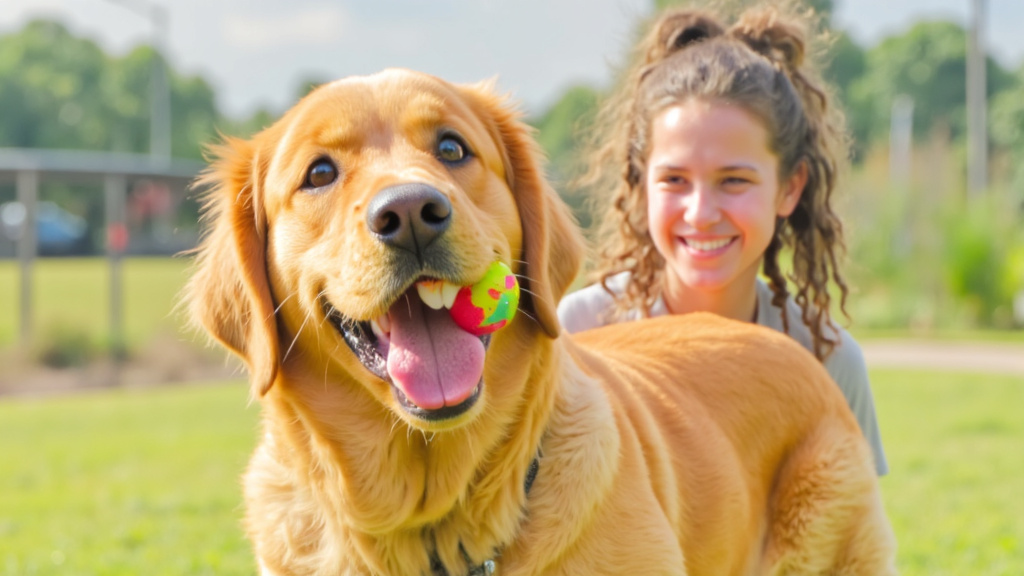
Your dog’s oral health directly impacts their overall well-being and longevity. Partnering with your veterinarian and maintaining a consistent home dental routine helps prevent dental disease complications. Regular tooth brushing, vet-approved chews, and dental toys can significantly improve your dog’s oral health over time.
Maintaining your dog’s activity levels and safety during outdoor exploration supports their overall well-being. The Halo Collar helps provide secure freedom during walks and playtime, reducing anxiety for both you and your dog—making routines like dental care and vet visits easier.
The combination of regular dental care, veterinary support, and appropriate safety measures creates a foundation for your dog’s long-term health and happiness.
For more in-depth information on canine wellness, visit our dog health page for helpful tips and expert guidance.

